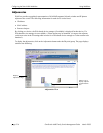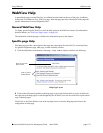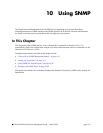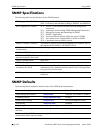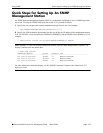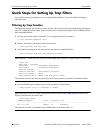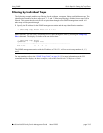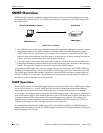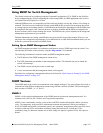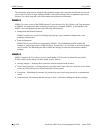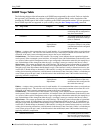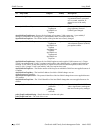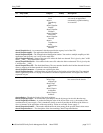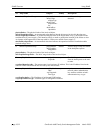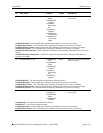
SNMP Overview Using SNMP
page 10-6 OmniSwitch 6600 Family Switch Management Guide March 2005
SNMP Overview
SNMP provides an industry standard communications model used by network administrators to manage
and monitor their network devices. The SNMP model defines two components: the SNMP Manager and
the SNMP Agent.
• The SNMP Manager resides on a workstation hosting the management application. It can query agents
using SNMP operations. An SNMP manager is commonly called a Network Management System
(NMS). NMS refers to a system made up of a network device (such as a workstation) and the NMS
software. It provides an interface that allows users to request data or see alarms resulting from traps or
informs. It can also store data that can be used for network analysis.
• The SNMP Agent is the software entity that resides within the switch on the network. It maintains the
management data about a particular network device and reports these data, as needed, to the managing
systems. The agent also responds to requests for data from the SNMP Manager.
Along with the SNMP agent, the switch also contains Management Information Bases (MIBs). MIBs are
databases of managed objects, written in the SNMP module language, that can be monitored by the NMS.
The SNMP agent contains MIB variables, which have values the NMS can request or change using Get,
GetNext, GetBulk, or Set operations. The agent can also send unsolicited messages (traps or informs) to
the NMS to notify the manager of network conditions.
SNMP Operations
Devices on the network are managed through transactions between the NMS and the SNMP agent residing
on the network device (i.e., switch). SNMP provides two kinds of management transactions: manager-
request/agent-response and unsolicited notifications (traps or informs) from the agent to the manager.
In a manager-request/agent-response transaction, the SNMP manager sends a request packet, referred to as
a Protocol Data Unit (PDU), to the SNMP agent in the switch. The SNMP agent complies with the request
and sends a response PDU to the manager. The types of management requests are Get, GetNext, and
GetBulk requests. These transactions are used to request information from the switch (Get, GetNext, or
GetBulk) or to change the value of an object instance on the switch (Set).
In an unsolicited notification, the SNMP agent in the switch sends a trap PDU to the SNMP manager to
inform it that an event has occurred. The SNMP manager normally does not send confirmation to the agent
acknowledging receipt of a trap.
SNMP Network Model
Network Management Station OmniSwitch
SNMP Manager
SNMP Agent
OmniSwitch 6648



